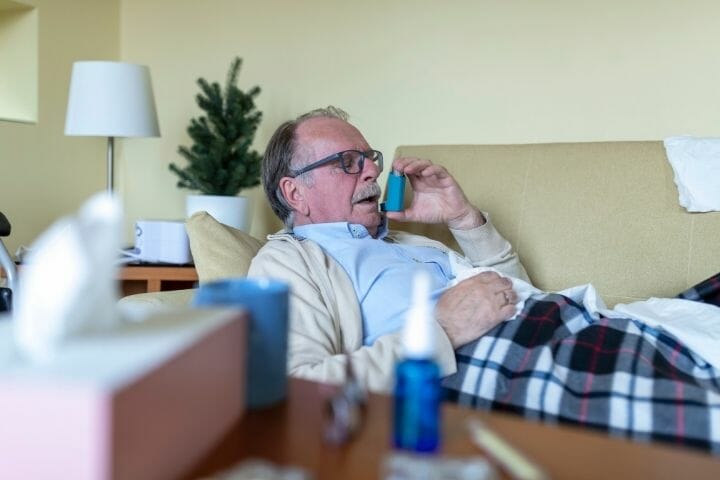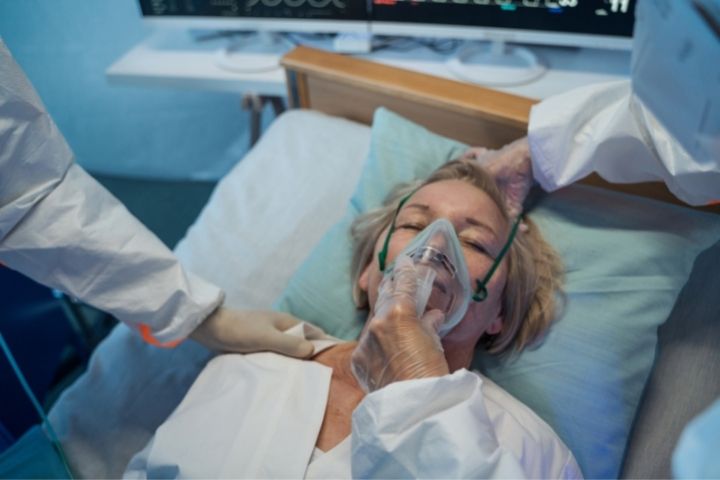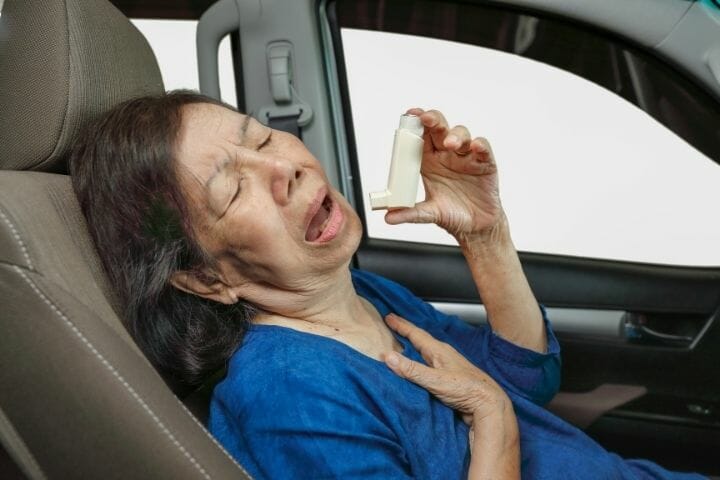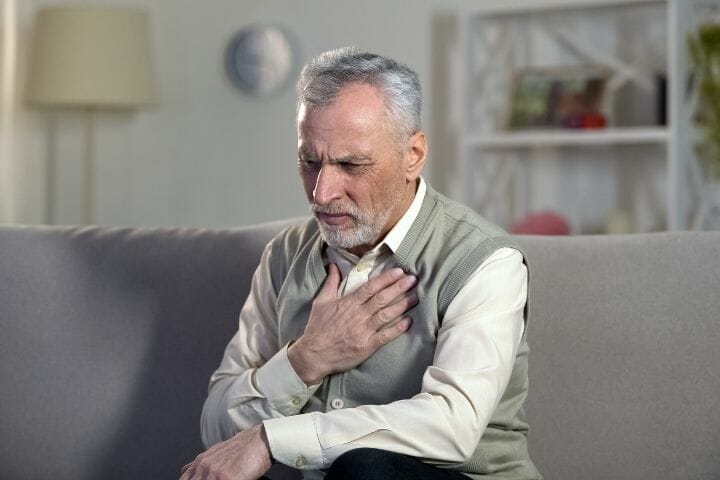Shortness of breath is the most common problem among seniors. Here is a list of 5 breathing exercises for elderly to improve their overall health.
Contents
How many times did your elderly parents call you out to help them climb stairs? Many times, probably. There are many such incidents when the seniors in your house may have asked for your help. They might have needed help even in daily chores. Well, aging definitely comes with a lot of setbacks.

One of the most common problems in old age is shallow breathing. While breathing difficulty can arise at any age, however, older adults seem to be the ones most affected by it. This is mainly because of lung diseases, heart diseases, anxiety, anemia, and weakness in the muscles.
As per one study, it has been observed that our lungs can hold 6 liters of air. This is known as the lungs’ capacity to efficiently breathe in air and breathe out the produced carbon dioxide.
The entire process of taking in air and exhaling carbon dioxide gasses happens naturally till the age of 25 years. As soon as the age crosses 40 years, the body’s natural breathing slows down. Particularly, in old age, the respiratory system fails to function as efficiently, resulting in increased pressure on the lungs.
For this reason, this article highlights some of the best breathing exercises that will improve your breathing pattern and strengthen the overall respiratory system.
Before we begin, let’s read through the causes that lead to breathlessness and why breathing exercises are important for health.
You might like to read: 10 Best Exercises for Seniors
Reasons Behind Shortness of Breath:
There are many underlying factors that can make an older person choke or bear uncomfortable chest pain.
Nevertheless, these problems exist because of chronic obstructive pulmonary diseases (COPD), or people prone to heart diseases, cancer, and nonmalignant lung diseases.
Increasing cases of allergy attacks, asthma, and of course, the growing concern about pollution levels are other reasons why this problem is becoming more severe in recent years.
Why are Breathing Exercises Essential?
Lungs are an integral organ of the human body which functions as a part of the respiratory system. Apart from breathing in and out, the lungs can hold sufficient air to pass it over to the body’s different cells.
Apart from the lungs, breathing also takes place through a muscle called the diaphragm. Situated just below the lung, the diaphragm muscle separates the chest lining from the stomach lining. As you take in the air, your diaphragm pulls down to expand your lungs and vice versa.

Regular breathing builds a strong immune system, supplies oxygen throughout the body, and keeps the respiratory organs healthy.
The slow breathing rate of 5.5-6.0 breathes per minute can easily help with unnecessary food cravings. This, in turn, is specifically helpful for people who are trying to reduce their appetite.
Above all of this, the daily practice of breathing exercises can help one experience:
- Optimum blood pressure
- Good sleep to get rid of insomnia
- Improved mood with less stress and anxiety
- Help to deal with pain.
- Regulates blood circulation
- Builds up immunity with increased energy
You might like to read: A Complete Guide to Running for Seniors
Daily Breathing Exercises For Elderly
It is quite certain that breathing exercises prevent older adults from falling at the risk of chronic diseases. With these easy-to-do exercises, one can stimulate the body to function efficiently.
Abdominal Breathing
Abdominal breathing is one of the most popular breathing exercises that you can do at any time of the day. Many yogis or medical practitioners often advise this exercise to strengthen the flat or weak diaphragm.
Also called “diaphragm breathing” or “belly breathing,” the daily practice of abdominal breathing helps to move the abdomen muscles. This exercise is particularly helpful for people with chronic obstructive pulmonary disease (COPD). COPD can exist in two forms in varying severities:
- Chronic bronchitis: The internal lining of the bronchial tubes gets inflamed. These tubes are the ones that carry air to and from the lungs. Symptoms: Mucus, daily coughing.
- Emphysema: This disease is typically caused by exposure to smoking and pollution, wherein the lungs’ alveoli (air sacs) become destroyed.
In either case, there is less exchange of air in the body, and the air inside the lungs accumulates and also does not let out the body’s carbon to a full extent. COPD affects the functioning of the lungs and the diaphragm, making it difficult to breathe fresh air.
With abdominal breathing exercises, you can ease your neck and chest muscles which get pressurized with less intake of air.
- Lie on your back or sit comfortably, keeping your body in a comfortable state.
- Place one hand on the chest and another one over your abdomen. This will help you to feel your breath more accurately.
- Breathe in through your nose, and when you do so, you should feel your hand rising upwards as you inhale.
- Make sure not to hold your breath in your chest as it will further aggravate the pain in the chest muscles.
- Now, slowly exhale with your mouth to feel your hand returning to the original position. Repeat the exercise for 10 minutes daily.

Paced Breathing
Paced breathing, also termed as slow and deep breathing, is done to relax the mind away from distractions. A person might struggle with loneliness or detachment from family at an older age. Some may even find it hard to cope with stress hormones released by the body in any unfortunate situations.
Notably, paced breathing exercises are done to help the elderly manage stressful situations. If a person normally takes 12-14 breaths a minute, then the paced breathing allows you to take 5-7 breaths a minute.
To exercise paced breathing, here are a few tips to follow as a beginner:
- Before starting the exercise, it is important that you relax your lungs’ upper lobes and lower lobes.
- Sit in a relaxed position as if you are about to take a power nap.
- Close your eyes and inhale through your nose for about 2-4 seconds, ensuring your chest and stomach should rise above during inhalation.
- Try to think about one particular object or focus on your breathing pace to improve your overall breathing.
- Exhale through your mouth with a whoosh sound for the next 4-6 seconds, ensuring you exhale longer than you inhale.
- Repeat this exercise for the next 5 minutes and gradually increase the time depending on your stamina.
You might like to read: 11 Best Exercises To Improve Your Balance
4-7-8 Breathing exercise
The 4-7-8 breathing exercise allows you to take in more air and let the air pass through different organs of the body. This is a simple exercise that any age group can do, but it is often recommended that elders and senior citizens should follow this exercise daily.
Mainly done for the purpose of improving sleep quality, exercise is a boon for people with insomnia or for someone who struggles with quality sleep. Apart from that, it is also beneficial to reduce stress and improve the nervous system.
Synonymous with “relax breathing,” the 4-7-8 breathing technique is a sure-shot way to improve the nervous system. It has even been analyzed that 4-7-8 breathing helps to open up the passages in the nervous system and lessen the heart rate to calm the body.
To implement this exercise in your lifestyle, here are some steps to follow:
- Sit or lie down, ensuring that your body remains free.
- Inhale through the nose on the count of 4 seconds.
- Let the breath sit in your stomach by holding the air for about 7 seconds.
- Exhale through the mouth in the next count of 8 seconds. Exhalation should always be longer than the time taken to inhale air.
- Repeat for 5 minutes daily to see the immediate results.
Note: It is advised to practice this breathing exercise in the afternoon or night to improve your sleep.

Advanced rib-lifting breathing exercise
It is least known that your ribs play an important role when you breathe. Along with the diaphragm, the ribs also allow the lungs to fill in more air by moving out and down to contract altogether.
In rib-lifting breathing exercises, your upper body relaxes to the core minimizing the pain in any upper body part from the neck, chest, or ribcage. The exercise is done to improve the overall posture and lifts your rib cage to allow more air to enter the body.
For this reason, elders need to perform this exercise to decrease the pain or inflamed ribs.
Here are a few small steps that will help you as a beginner:
- Perform this exercise either in a sitting position or lying down on a flat surface.
- Bring both hands in front of your waist. Inhale as much air as you can through the nose and lift your arms gradually during inhalation.
- Try to hold your breath for a few seconds till you feel that enough air has passed through the lungs.
- Exhale slowly through your mouth with a whoosh sound, ensuring that both your hands should reach down.
- Relax and repeat the process ten times.
Buteyko Breathing
Buteyko breathing was first developed by the Russian Konstantin in the 1950s. Ever since then, this breathing exercise has developed a lot of interest in the USA population. This is more so because the breathing technique focuses on three elements: nasal breathing, reduced breathing rate, and relaxation.
One piece of evidence also suggests that Buteyko breathing helps to eliminate the risks associated with lung diseases, normalizes the pulse rate, and efficiently aids hyperventilation.
This is a simple exercise that can be done as follows:
- Sit in an upright position to keep your spine in a neutral position.
- Take shallow breaths for 5 seconds before starting the exercise.
- Take in air and exhale, trying to retain the breath. This can be done when you block your nose with your index finger and thumb.
- Inhale and breathe for the next 10 seconds.
- You can choose to repeat the process several times a day.

Take Away
Breathing exercises are a great way to accentuate your body, relax muscles and build peace of mind in old age. However, for a smooth experience, it is always recommended for older adults to take the initial help of a physiotherapist or a caregiver as a beginner.
This will often come in handy for individuals with asthma, pulmonary disease, or other severe lung diseases.
We hope this article contains all the necessary information that you need to help your older loved ones fight shortness of breath and other respiratory disorders. If you have questions about these breathing techniques, feel free to drop them to us in the comments section, and we will try to share the answers with you.
If you found this article helpful, do not forget to share it with friends and through your social media handles and within your groups. Your likes and shares might help bring smiles to many!
